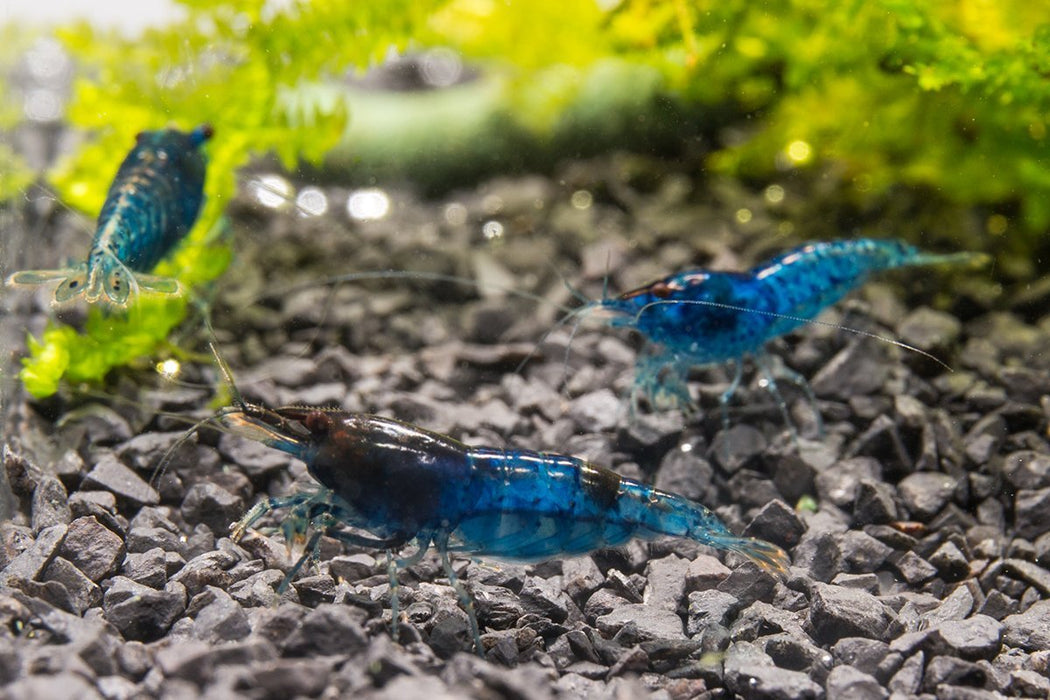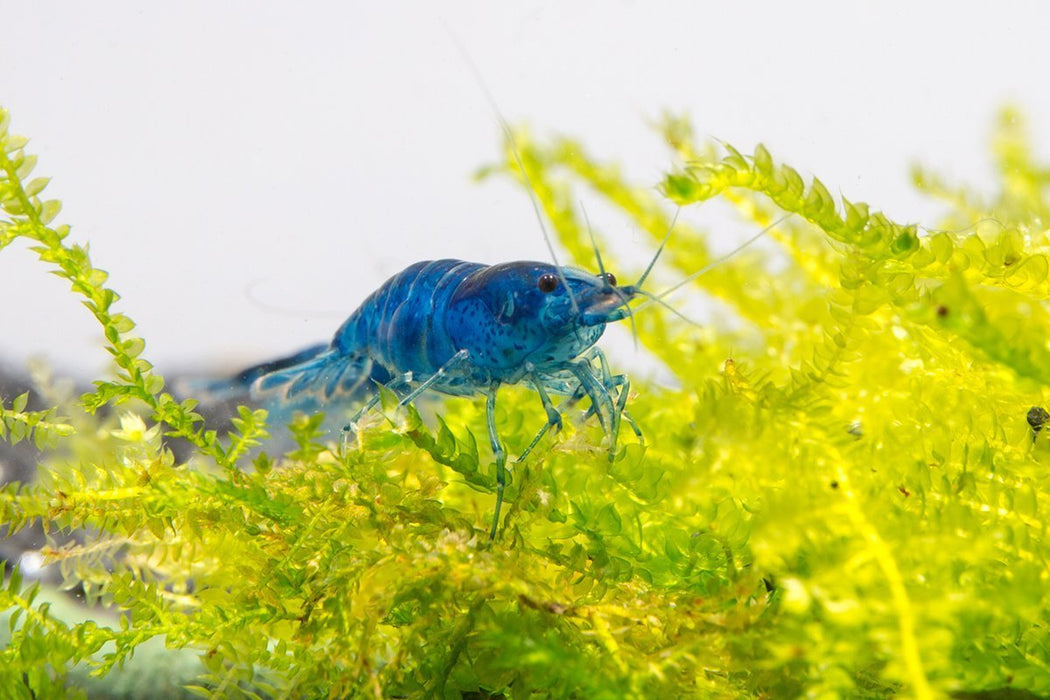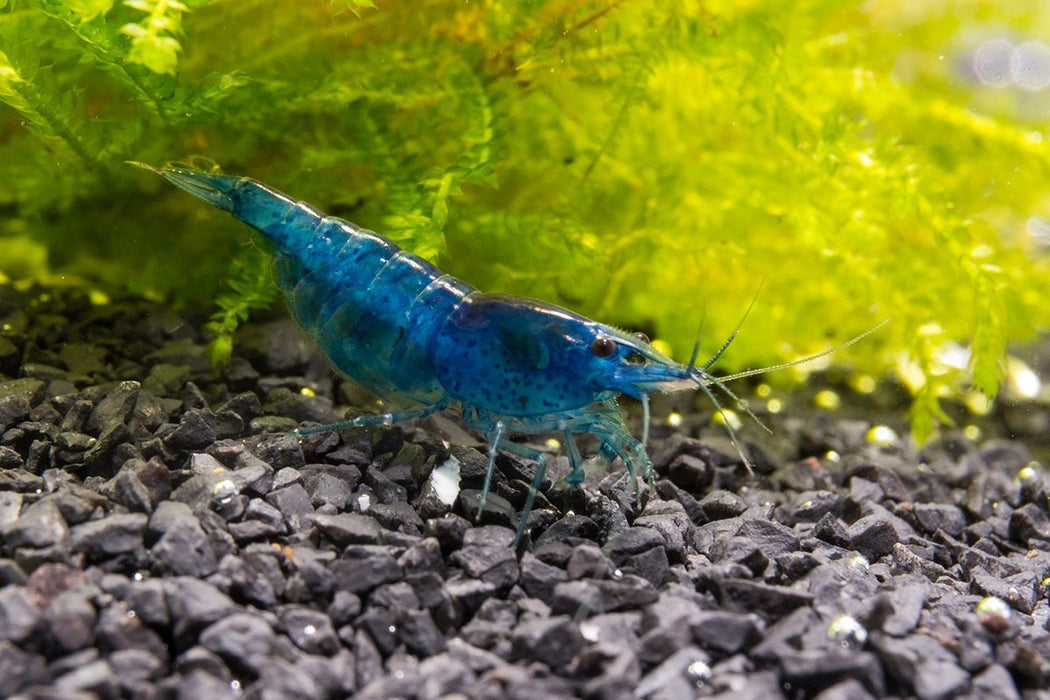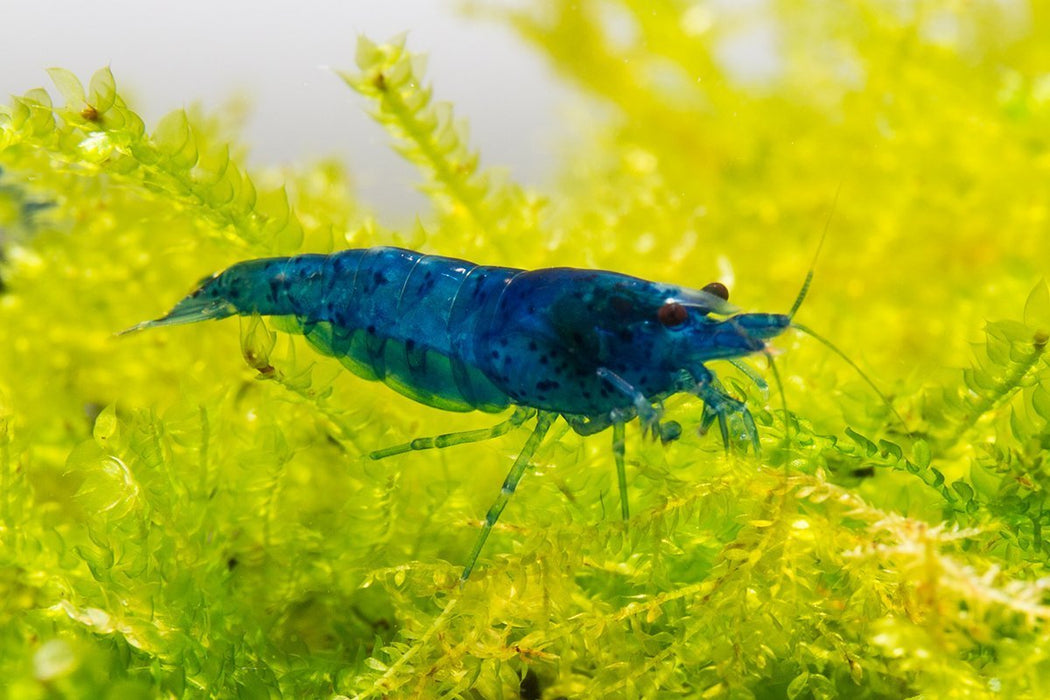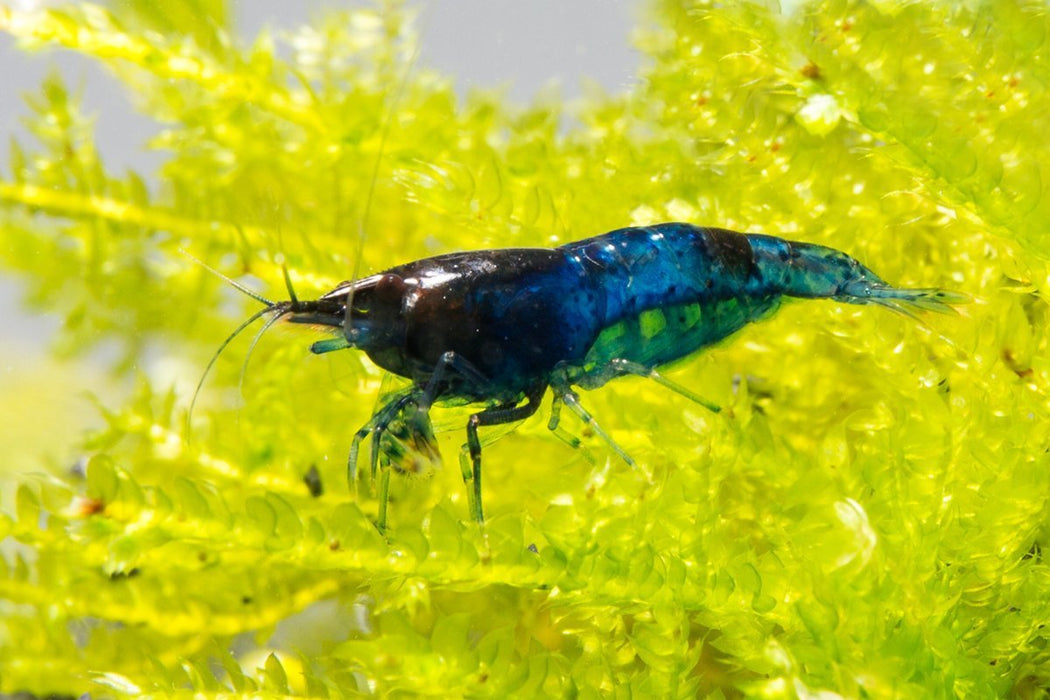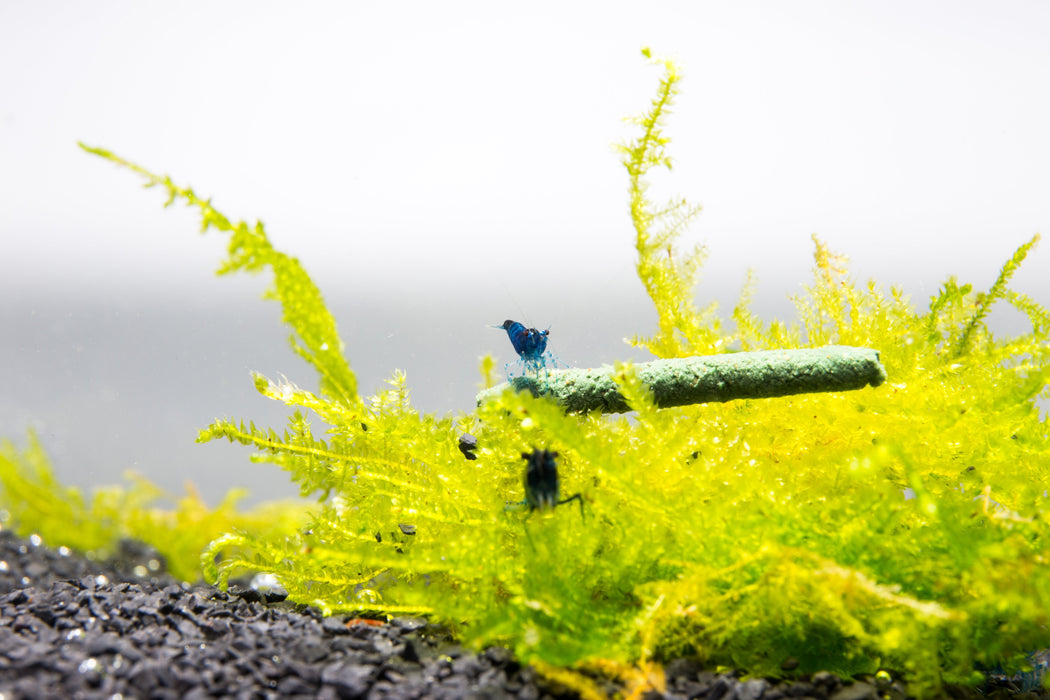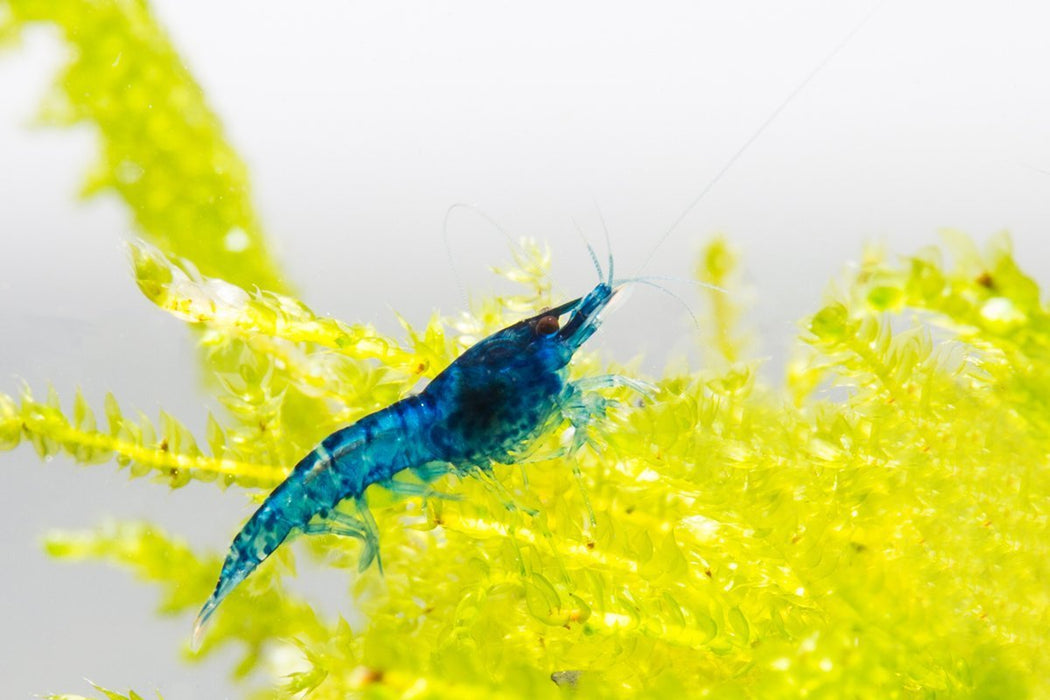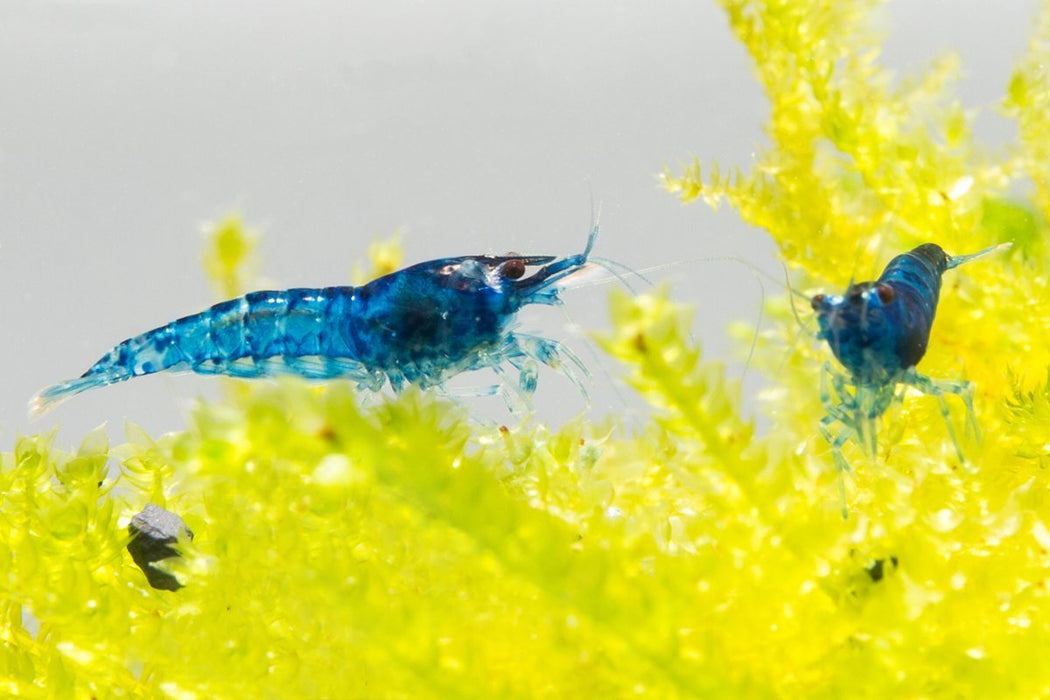
Blue Dream Shrimp
Common Name: Blue Dream Shrimp
Scientific Name: Neocaridina Davidi "Blue Dream"
Genus: Neocaridina
Wild Origin: Asia
Adult Size: 1.25in
**Note: All livestock orders will come carefully packaged with solid wall Styrofoam insulation and shipped via 1-day shipping only. No extra insulation needs to be added to your cart for your livestock.
The Blue Dream Shrimp is a popular choice for freshwater shrimp hobbyists because of its stunning blue color as well as being relatively easy to care for and breed.
Blue Dream Shrimp make a striking and dynamic addition to a freshwater aquarium. These shrimp are very active as they scavenge the tank, cleaning up waste. They love to feed off of naturally occurring biofilm and algae, especially in a planted tank. For this reason, they can be quite low maintenance; in fact, they can even help keep your tank clean! Blue Dream Shrimp can withstand a pretty wide range of water parameters, and are not an aggressive species. This combined with their versatility makes them a good option as tank companions. Blue Dream Shrimp breed easily, making them a good choice for beginners to the freshwater shrimp hobby.
Blue Dream Shrimp are tolerant to a fairly wide range of water parameters, making them excellent for pairing with other species. As long as the shrimp are acclimated properly to your chosen parameters and are not subjected to extreme changes in temperature or acidity, they are adaptable and resilient. They will tolerate soft or hard water. The ideal water parameters are 70°-85° F with 7 to 7.5 pH. However, as mentioned, you may keep them outside of these parameters as long as the shrimp are protected from extreme or frequent fluctuations.
Key Features & Important Notes
- Tank-raised specimen
- Bright, bold color and pattern
- Shrimp are excellent scavengers and will happily feed on biofilm, decaying plant matter, and algae
- To increase survival rates, please allow 2-3 business days after placing an order to properly prepare live animal shipments
Recommended Water Parameters
Listed information should be treated as general guidelines only. We encourage you to do thorough research before committing to keeping any livestock.
- Temperature Range: 65-80°F
- pH: 7.2-7.6
- TDS: 250-300 ppm
- GH: 4-8
- KH: 3-15
Recommended Tank Size
5+ gallons, minimum. Tank size is relative and various factors should be considered when determining tank size. Factors include maintenance schedules, tank mates, desired colony size and more.
Diet
Algae, biofilm, diatoms, decaying plant matter, spirulina powder, bee pollen, plant-based shrimp pellets/wafers, blanched vegetables
Breeding
Sexing these shrimp can be somewhat difficult until the shrimp begin to mature. Females have slightly larger tails and display a “saddle” formation on the upper body, behind the head, where eggs are stored before fertilization. When female shrimp are “berried”, or have eggs ready for fertilization, the saddle shape will appear more prominent. Once the shrimp are fully-grown the males will be smaller than the females.
Blue Dream Shrimp are eager breeders given comfortable water parameters and a sufficient food source. Once the shrimp reach maturity, and if there are males and females present, they should breed naturally and frequently. It is recommended to purchase 8-10 shrimp to ensure that there are enough male-female pairs for successful breeding.
When female shrimp have eggs available for fertilization, they will molt and release pheromones that the male shrimp respond to with frenzy. Once the shrimp breed, the eggs will gestate for about 2 weeks. The shrimp fry will feed from the same food sources as adult shrimp and will molt frequently during their early life stages. Leave molted shells in the tank, as the shrimp fry will consume them for extra minerals like calcium that will help their growth.
Keep in mind that if you are keeping shrimp with other species of fish, or possibly aggressive shrimp species, this may affect reproduction. If the shrimp feel threatened or don’t have places in your tank to hide they may not breed.
Check out our blog article to learn how to breed freshwater shrimp.





